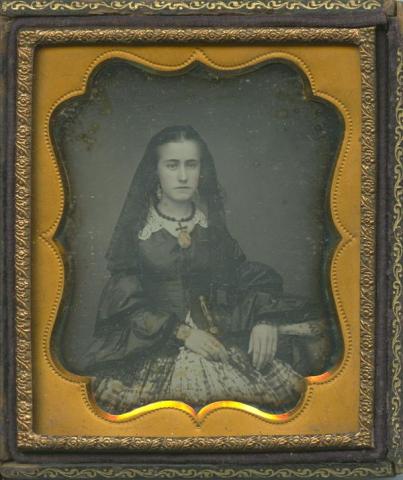
This week marks a historic anniversary in the history of invention and photography. On August 19, 1839, the French artist and inventor Louis-Jacques-Mandé Daguerre (1787-1851) announced the invention of the daguerreotype photographic process, the first process to allow an image to be chemically fixed as a permanent picture.
His work built on that of Joseph-Nicéphore Niepce (1765-1833), who created the world's first permanent photograph from nature around 1826 or 1827 through a process known as heliography. That photograph, however, required about eight hours of exposure time and resulted in a fairly poor quality image. Wanting to improve the technology, Niepce partnered with Daguerre, and the two worked together until Nipece's death in 1833.
Daguerre continued the pair's work, eventually creating a chemical fixing process for exposed iodized silver plates that could create an improved image after an exposure time of 20 to 30 minutes. While Daguerre was satisfied enough with his experiments to privately announce the discovery in January of 1839, the public reveal was kept secret until August, when the French government purchased the patent rights from Daguerre, and then relinquished its claim and published complete working instructions, declaring the technology a “free gift to the world”. In exchange, Daguerre was provided with a lifetime pension. A lifetime pension was also extended to Isidore Niépce (1805–1868), the son of Joseph-Nicéphore Niepce.
This undated daguerreotype (ca. 1860?) comes from a group of portrait photographs found in Hagley Library's collection of Lukens Steel Company photographs (Accession 1972.360). The company was a medium-sized, non-integrated steel company and one of the top three producers of steel plates in the nation. Lukens operated continuously at its Coatesville, Pennsylvania site since 1810. It was controlled by members of the Pennock, Lukens and Huston families in direct succession for over 180 years; the company is noted for being the first industrial company in the United States led by a woman, Rebecca Lukens (1794-1854).
Our Digital Archives' collection of Lukens Steel Company photographs and audiovisual materials contains selections from the collection, including woodcuts showing the early history of the mill, interior and exterior views of factory buildings, various depictions of machinery, employees both at work and leisure, floods in 1955 and 1973, and twentieth-century aerial views of the Coatesville plant. Other items depict the owning families, company anniversary celebrations, and philanthropic activities supported by Charles Lukens Huston. The collection also includes a selection of films produced or collected by Lukens.

